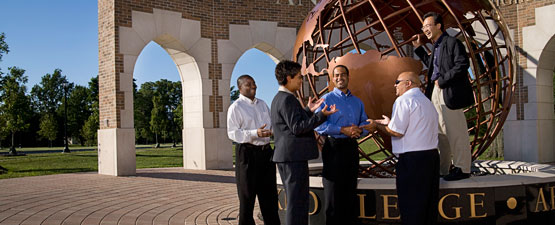Professional Dissertations DMin
Date of Award
2017
Document Type
Project Report
Degree Name
Doctor of Ministry
College
Seventh-day Adventist Theological Seminary
Program
Doctor of Ministry DMin
First Advisor
Bruce Bauer
Second Advisor
James Wibberding
Third Advisor
Richard Sylvester
Abstract
Problem
The City of Woodburn, OR is home to a population of 24,223. Over half of the residents are Hispanic, while 1/4 to 1/3 are Russian Orthodox Old Believers. Adding to its diversity, 35.4% of the total population of Woodburn is foreign born. Started as a church plant 30 years ago, the mostly White, non-Hispanic Woodburn Community Seventh-day Adventist Church has traditionally kept a membership of around a 100, with a current membership of 101 and an average attendance of 38 in 2011. Despite an ideal, central location in town, an ability to embrace and support new members and attendees, as well as yearly outreach programs, the church has not seen significant growth. Woodburn Community Seventh-day Adventist Church does not intentionally reflect the makeup of our community due to lack of vision for multicultural ministry, therefore its mission and ministry impact is minimal.
Method
A vision and a strategy for meaningful multicultural ministry will be created by: (a) gathering data about the makeup of our community; (b) assessment of church members’ perception of the current situation; (c) creating opportunities for visioning and dialogue on multicultural issues; (d) developing a strategy for member training, outreach and improvement of church ministries. The following implementation steps will be taken: (a) creating a population profile for the City of Woodburn; (b) initial administration of the Intercultural Effectiveness Scale to assess members’ ability and readiness for multicultural interaction; (c) developing and presenting a training seminar focusing on cross-cultural ministry that includes diversity and intercultural communication exercises; (d) conducting and facilitating four church-wide meetings for visioning and dialogue; (e) involving the Church in identifying or creating new opportunities for cross-cultural ministry and community service, and engaging members in intentional multicultural ministry; and (f) biannual celebration of diversity and growth. The IES will be administered again 12 months into the project, after the implementation steps have been taken, to assess any change in overall vision and readiness for multicultural interaction, followed up by a church-wide review of progress. This project will be completed by December 2012.
Results
Woodburn Community Seventh-day Adventist Church members engaged in cross-cultural activities throughout the duration of the project. The church created a vision statement as well as a mission statement as a result of church-wide visioning meetings and person-to-person interaction. The church also made changes in church structure, order of service, and the church’s name upon developing a vision for multicultural ministry. Various ministry teams experimented with new ways of reaching out to the different other in the context of applying the directions of the new mission statement. The members participated in large numbers in celebratory events scheduled around major yearly holidays, which included the different others from the community. The Intercultural Effectiveness Scale (IES) profile however remained virtually unchanged with no significant improvements of members’ soft competencies for crosscultural interactions.
Conclusions
Developing a vision and a strategy for multicultural ministry in the local church is a moral imperative in the 21st century as the United States is becoming more diverse without a White majority by 2050. This task involves systemic change and soft competencies for cross-cultural interaction are essential. Even though the Woodburn Community Seventh-day Adventist Church members did not register significant score improvements for the IES over the course of this project as reported, the church was willing to experiment and reached out to the different other in its community, which indicates that while multicultural ministry takes time to become reality, it is attainable in the local church.
Subject Area
Church work with minorities--Seventh-day Adventists, Woodburn Community Seventh-day Adventist Church (Woodburn, Ore.), Pastoral theology
Recommended Citation
Ciobanu, Eduard Daniel, "Developing a Vision and Strategy for Multicultural Ministry: Woodburn Community Seventh-day Adventist Church" (2017). Professional Dissertations DMin. 306.
https://dx.doi.org/10.32597/dmin/306/
https://digitalcommons.andrews.edu/dmin/306
Creative Commons License

This work is licensed under a Creative Commons Attribution-No Derivative Works 4.0 International License.
DOI
https://dx.doi.org/10.32597/dmin/306/



